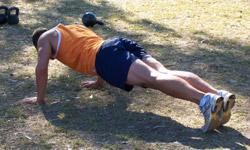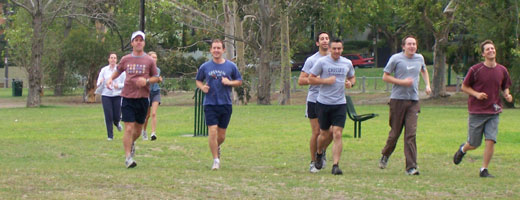
Let's look at an example. The push-up is one of the most basic bodyweight exercises in existance. It is simple in its design and execution yet can be performed poorly with incorrect technique and incorrect points of focus. So, let's simplify the movement. What are we aiming to do? We want to raise our body from the floor by extending our arms away from our bodies. Simple. The only other thing to think about at the most basic level is that you must keep your body (from shoulder to toe) rigid and in a straight line. Not too difficult either. Here's the easiest way to do it. Lie face down on the ground. Don't start at the top. Remember it's a push-UP so start at the bottom. Now, hold the muscles of your torso, hips and legs just tight enough to maintain the position you are in whilst lying face down. Position your hands where comfortable (we can alter this position for various reasons if we choose) and push yourself up until your arms reach full extension. Then lower yourself down. Easy.
The moral of the post? Keep it simple. You can apply this principle to most movements (yes, even the seemingly complex ones). Think about it - what is a deadlift? It's simply lifting an object from a dead stop. What is a pull-up? It's simply pulling yourself up to an overhead bar. So, start simple and once you've got the basics then you can start to analyse the movement a little more and tweak it until it's perfect.









Post a Comment
Create a Link
<< Home